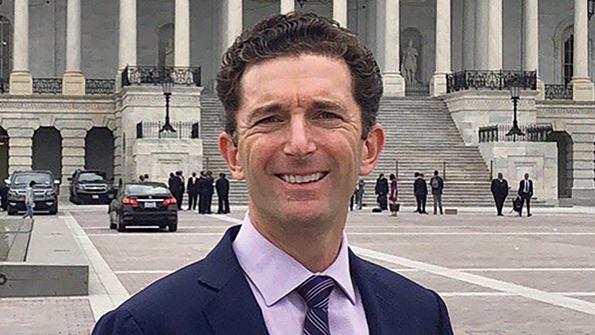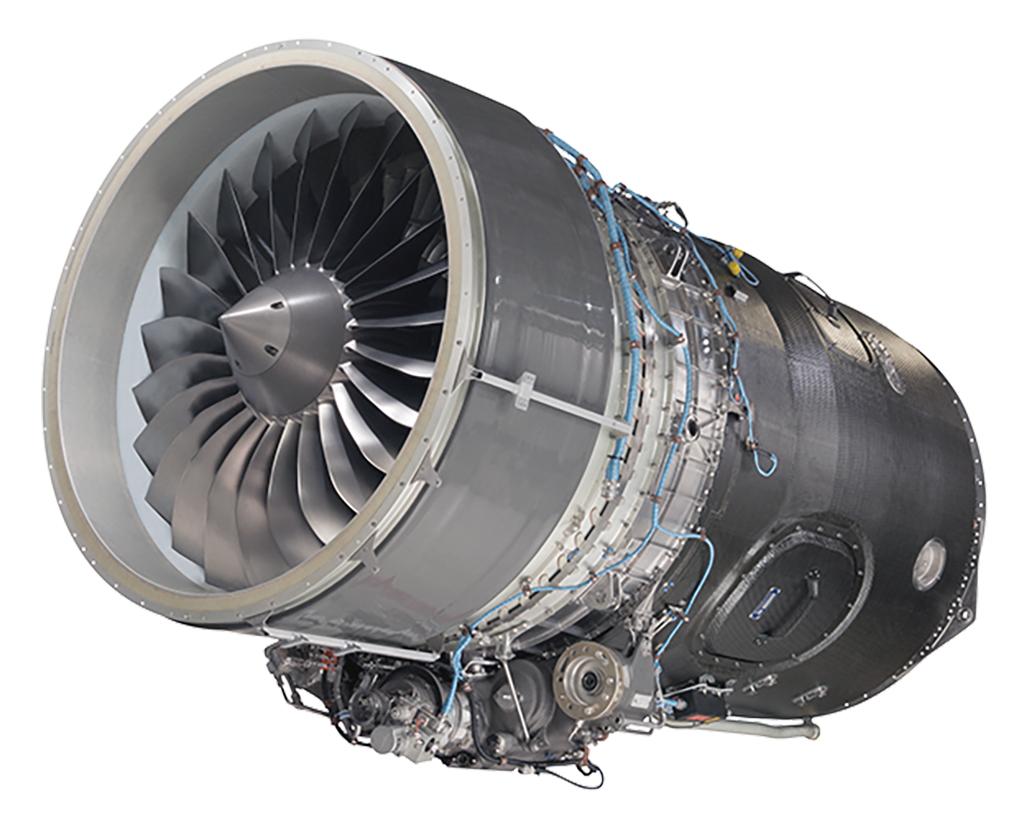
More than 7,000 Pratt & Whitney engines are in service in military aircraft worldwide, and the company is adding about 150 F135 and dozens of F100 engines to that total every year. As new opportunities for fighter engine upgrades and Boeing B-52 engine replacements come up for grabs, Aviation Week Editors Steve Trimble and Guy Norris talked with Pratt Military Engines President Matthew Bromberg about the company’s priorities for seeking growth amid a disruptive health pandemic.
- Company on track to qualify 188 parts to replace Turkish suppliers on the F-35
- Why the PW800 is the “best damn engine” for the B-52
AW&ST: We want to know this from everybody right now: How were you able to manage the COVID-19 pandemic in your military engines business? Like many of the participants in this pandemic, in the first 24-48 hr. it was all about rewriting our crisis management plans. We had contingency plans for site disruptions and things of that nature, but I don’t think anyone anticipated the scope of what we have today. I’m really impressed with the Pratt & Whitney communications team and the information technology (IT) team for figuring out how in a fairly rapid period [about five days] to shift our workforce from everyone being on-site to one where we had safety protocols for the operations. We’ve been open every day. We’ve never shut down any of our facilities. We had a couple of rocky days, but, honestly, the IT team tripled our capacity in a matter of 72 hr. to handle the VPNs, the Zoom calls, the webexes and the like.
So Phase One, kind of the first five days, I was really impressed with Pratt & Whitney. Phase Two, for us, was business continuity. We experienced a 20-25% productivity drag on our overall system—sometimes better, sometimes worse. Initially, it was figuring out how to keep the employees safe: [personal protective equipment], gloves, masks and industrial cleaning. We have industrial cleaning crews in all of our occupied spaces. We’ve been thinking through social distancing, trying to redefine work steps where employees were close together—not out of necessity, but out of convenience. The last measure is thermal scanners, which are pretty much in operation at all Pratt & Whitney facilities over the past four weeks. So the sum toll of that: We hit a low point in April, where we had probably 50% absenteeism in our shops. Employees were nervous about coming in. Clearly our military programs are at the front of the line, so we’re able to keep resources on all of them and maintain our production line. Sitting here now in July, we’re back to normal in the [range of] 20% plus or minus absenteeism, which would be typical for our workforce.
There’s been a lot of discussion here in Washington in the last few days about the status of the Turkish suppliers on the F-35. Can you bring us up to date on where you stand with replacing the Turkish suppliers on the F135 engine, especially with the Integrated Bladed Rotors (IBR)? We launched [the Turkey supplier replacement] program well over a year ago. The [bottom line] is we have 188 critical parts that needed to be replaced. A dozen of those are in the IBR—a very, very critical technology. And we’re on track with our commitment to have everything requalified by the first quarter of 2021. COVID-19’s putting some delays in there, but we have some buffer in our schedule. So we’re on track with qualification. In fact, about 128 out of 188 parts are complete and ready to transition. Our commitment to the [F-35] Joint Program Office is to have the transition done at rate by the time we get Lot 15 engines, and we’re on track for that. [The pandemic] slowed us down about 2-3 months, but we had some scheduled buffer, so we’re able to absorb that and maintain the target.
So, all 188 parts replaced by 2023? All 188 parts will be qualified by the first quarter of 2021 and at rate in time for Lot 15, which is 2023.

Are those parts being insourced by Pratt & Whitney? It’s a mix. The direction was: Go in an expeditious fashion. I think 80% of [those parts] came domestically back to the U.S. I don’t know the exact portion we insourced—I think we insourced probably 15% within Pratt & Whitney. The rest went to other existing suppliers in the U.S., and then a portion went to existing suppliers outside of the U.S. But the overriding objective was to move with speed and diligence along the transition plan and ensure we are ready to be fully out of Turkey by about Lot 15. We are on track for that.
Where are you with the Adaptive Engine Transition Program (AETP), also known as the XA101? Do you see it as an all-new engine, or at least one that could provide an option for a next-generation fighter, as well as potentially a longer-term re-engine option for F-35, should that evolve? Where are you with balancing that work? Are you slowing down? Not at all. We are as focused as ever on AETP. Our XA101, we firmly believe, is the future of fighter propulsion and the future of military engines. The question just is when, and we are laser-focused on our first engine to test. We’re racing with our program office to that milestone, [and we’re] thrilled with how the technology has progressed—both through [the preceding Advanced Technology Engine Demonstration] and some of the early stages of AETP.
We think the technology—whether it’s in the entire AETP incarnation, XA101 with the third-stream architecture, or some elements that we’ve developed—make that whole system work the way the services want. As an engine provider, my goal is to provide options, and if I can, provide an option that meets the needs in an agile fashion, that takes a subset of AETP technologies and creates an upgrade to an F135 potentially—or even an F119 [for the F-22] or an F100 [for the F-15 and F-16]—that’s a home run for [the Defense Department].
Some AETP upgrades just don’t necessarily fit in a smaller, mid-thrust engine like an F100. Putting a third stream on that size of engine could be possible, but it’s going to be tough with the additional weight and complexity of it. By taking some of the advanced systems—mechanicals, power and thermal management, controls, a world-class compressor and turbine, in addition to the third stream architecture—we can leverage that technology to upgrade F100s or F119s. So I’m super-excited about that.
We hope to provide similar solutions both with an upgraded F100, which is an early conversation, and an F119. As people look at the F-22 Raptor in 2040, they ask: “What do we need out of the engine?” I tell my technologists at GatorWorks: “You guys have all the Legos on a shelf.” And the Legos are the various technologies we put into the different engines. I challenge them: “How do you pull the Legos off?” That’s what GatorWorks is designed to do.
You’ve proposed to reengine the B-52 with the Pratt & Whitney Canada PW800. It’s doing really well in terms of its business jet applications, but can you describe how you’re actually leveraging that in your bid for B-52?
The PW800, you’ve heard me say, is the best damn engine out there for this particular application. And here’s why: It meets all the request for proposal’s requirements, without hesitation. Installation, both functional and physical, is not a problem. We think we’re the perfect fit. It’s going to meet all the thrust, fuel-burn and power-generation requirements, so that’s fantastic. But as you pointed out, I think we really hit the sweet spot between what I call the three C’s: the cost, the capability and the community.
Can you tell us more about Pratt’s pursuit of the attritable engine technology for low-cost unmanned aircraft systems and cruise missiles, such as the FJ700 that Pratt revealed last year? We really focus a lot of GatorWorks’ efforts on the attritable space. We did a rapid development of a new core, the FJ700, which could be scaled down. We also did an additive TJ150, combining those two along with some fan work that we’ve done. We did a GatorWorks effort on fans. We now have those Legos, [or] building blocks, so we’re out pitching to the armed services what we could do in that small, attritable engine space. There’s a lot of interest in more cost-efficient and more capable engines for missiles, [as well as] obviously for some of these attritable or expendable UAV technologies. So we’re really excited. We’re out working with the various primes to find the right solution. In fact, that’s one of the areas where Raytheon now being part of the family is exciting because we’re trying to combine some of these technologies to create some really innovative offerings.


